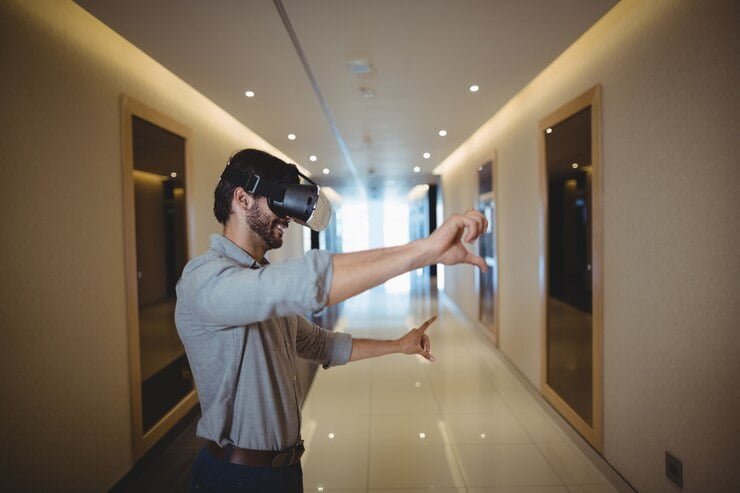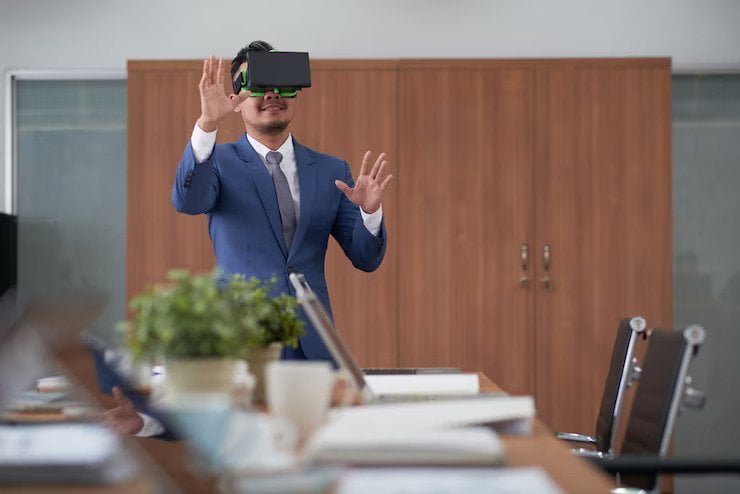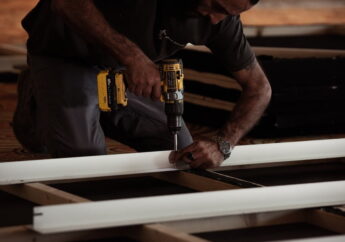Virtual Tour Technologies In Real Estate – How They Work And Why You Should Use Them
by Arnab Dey Technology Published on: 04 March 2023 Last Updated on: 20 May 2025

Virtual tours were a bold prediction for the future two decades ago.
Now, they have become an invaluable tool not only in the real estate sector but business as a whole. For instance you can mention Apple vision pro. Using state-of-the-art hardware and software, Apple Vision Pro for business gives companies a flexible and strong platform to improve productivity, teamwork, and creativity in the rapidly changing digital environment.
From basic 360-degree photography to immersive virtual reality experiences, virtual tour technologies are revolutionizing how we buy and sell real estate. Here’s how virtual tour technologies work and why they should be used in real estate.
Real estate virtual tours – what are they?

Real estate virtual tours are interactive 3D or 360-degree experiences of a property or space. Typically, they allow viewers to virtually explore and experience the space from the comfort of their homes. Moreover, they usually consist of multiple photographs or videos stitched together to create a 360-degree view of the space.
Undoubtedly, this method allows for a much more immersive and interactive experience than traditional 2D photos. Thanks to virtual tours, the user can explore the property from any angle, giving them a better idea of the property.
Besides, customers benefit from features such as clickable hotspots, which link to more information and explore the space at a custom pace. All of this helps create an engaging experience that everyone can access with an internet connection.
How do virtual tours work?
Virtual tours are a modern solution to the age-old problem of viewing properties remotely. Essentially, they allow potential buyers and renters to view a property without being physically present. This is done through 360-degree cameras, 3D imaging, and other interactive elements.
By combining these technologies, the user can explore the property in real-time, as if they were actually there. The technology creates an immersive space for users to view the property from any angle or perspective. Moreover, virtual tours typically include annotations or points of interest, which can further enhance the experience.
From a technical standpoint, the camera captures several images or videos of the property. Then it stitches them together to create a single, immersive image. In some cases, animations, special effects, and interactive elements can create an even more realistic experience. The result is a virtual tour that looks and feels as close to being on the property.
The benefits of using virtual tours
- Provide potential buyers with an interactive and realistic look at the property, allowing them to visualize how their furniture and belongings could fit in.
- Allow potential buyers to tour the property remotely, reducing the need to visit in person if they are out of town.
- Save time and money by eliminating the need to travel or schedule multiple in-person showings.
- Reach more potential buyers since virtual tours can be easily shared online.
- Eliminate common mistakes during in-person showings, such as forgetting to mention certain features or neglecting certain areas of the house.
- Create a more immersive experience with enhanced features such as 360-degree panoramic views, 3D models, and video tours.
- Offer more detailed information with guided audio tours and interactive floor plans.
The different types of virtual tour technologies

1. 360-degree video
Such a virtual tour allows viewers to take a virtual “walkthrough” of a property. 360-degree videos are created by stitching together multiple video clips from different angles, providing an immersive experience that takes viewers on a realistic journey.
2. 3D Virtual Tours
These interactive virtual tours offer viewers a detailed view of a property. 3D virtual tours create an almost lifelike experience with realistic textures and lighting, providing an up close and personal look at a property.
3. Matterport
Matterport is a 3D scanning technology that captures the interior of a home in photorealistic detail. It creates a 3D model that everyone can explore virtually. That way, viewers can move through each room as if they were there in person.
4. Drone Photography
Drone photography offers aerial shots of a property or neighborhood, giving viewers an overview of the location without leaving their homes. With high-resolution images, this type of virtual tour can also capture details that would be difficult to capture from ground level.
5. Video Tours
Video tours are often used in real estate listings to show off properties quickly and easily. Videos can be shot from multiple angles to give viewers an idea of the layout and features of a property.
How to start your virtual real estate experience
Virtual tours are the way to go if you’re a realtor or homeowner looking to sell your property fast. Along with virtual staging, such services are an excellent way to showcase your property in its best light. Thanks to technological advancements, potential buyers can view it from the comfort of their homes. To get started, you’ll need to find a professional company that leverages VR technology.
When it comes to experience and expertise, Spotless Agency virtual staging is the perfect solution for realtors and homeowners. The company is a leader in the field, offering high-quality 3D walkthroughs and 360-degree virtual tours to help you market your property.
Moreover, they can deliver exceptional results within a short timeframe. With Spotless Agency, you can be sure that your virtual tour will be of the highest standard. Ultimately, it will make a lasting impression on potential buyers.
Read Also:



































































































